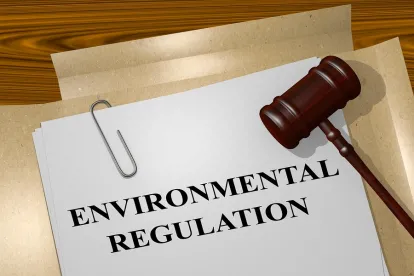On the eve of the new Biden Administration, the U.S. Court of Appeals for the D.C. Circuit vacated a key greenhouse gas rule created by the Trump Administration. The Biden Administration also swiftly rejoined the Paris Climate Accord. These two actions signal a new approach to climate change.
On January 19th, just before Inauguration Day, a three-judge panel of the U.S. Court of Appeals for the D.C. Circuit issued an opinion in American Lung Association v. Wheeler vacating and remanding the Affordable Clean Energy Rule (the “ACE Rule”), a rule promulgated by the Trump Administration to replace the 2015 Clean Power Plan. The ACE Rule replaced the Clean Power Plan’s aggressive greenhouse gas limitations for existing fossil-fuel fired power plants with more limited requirements that could be met with efficiency and heat rate improvements, leading to allegations of backslide from a coalition of industry groups, environmental groups, and states who challenged the ACE Rule. The D.C. Circuit’s 185-page opinion exhaustively analyzes the relevant procedural, regulatory, statutory, and legislative history of the Clean Air Act before vacating and remanding the ACE Rule to the agency to “consider . . . afresh” greenhouse gas emissions standards. What the D.C. Circuit’s opinion leaves unstated is whether, under its analysis, the Clean Power Plan should be reinstated during the period of the ACE Rule remand.
The D.C. Circuit opinion does not on its face reinstate the 2015 Clean Power Plan. However, President Biden issued sweeping executive orders on January 20th rejoining the Paris Accord and establishing a broad directive to review prior U.S. Environmental Protection Agency (“EPA”) rulemakings to “immediately commence work to confront the climate crisis.” In light of the remand and the D.C. Circuit’s directive to reconsider the rationale for the replacement of the Clean Power Plan with the ACE Rule, EPA may use the Clean Power Plan as a blueprint to address greenhouse gas emissions from existing fossil fuel-fired power plants, in turn having significant implications for industry and states alike. Interested industry and renewable energy developers will want to closely watch for the issuance of the D.C. Circuit’s mandate following its decision vacating the ACE Rule and the development of greenhouse gas emission regulations on remand.
Brief History of the Clean Power Plan and the ACE Rule
In 2015, after a lengthy rulemaking process, the Obama Administration issued the Clean Power Plan aimed at regulating greenhouse gas emissions from existing fossil fuel-fired power plants. The Clean Power Plan was developed in response to and, EPA argued, statutorily mandated by, EPA’s finding that greenhouse gases in the atmosphere endanger public health and welfare (the “GHG Endangerment Finding”). Under the Clean Power Plan, EPA set forth three “building blocks” to address greenhouse gas emissions at existing power plants: (1) heat rate improvements, (2) substitution of natural gas units for steam-generating units that are primarily coal-fired, and (3) prioritization of electricity from renewable energy sources over fossil-fueled power plants. The EPA set specific reduction goals for states based on rate or mass reductions with 2030 compliance timelines. States were to propose plans to comply with the Clean Power Plan’s mandates and were allowed some flexibility in their proposals for compliance. As noted above, in the face of multiple challenges, the Clean Power Plan was replaced with the ACE Rule in 2019.
The ACE Rule applied only to coal-fired power plants, not all fossil fuel-fired power plants and set specific emissions reduction goals based on heat rate improvements applied at or to the specific unit/facility itself, instead of more broadly requiring a “system” of emission reductions that effectively forced operators of coal-fired units to invest in renewable generation to meet the emission rates established by the Clean Power Plan. The ACE Rule indicated that the EPA could implement emission reductions only at specific sources and could not require other methods of emission reductions such as generation shifting from fossil fuels to renewable energy. The emissions reductions would be unit specific and non-mandatory. The ACE Rule also significantly extended the timelines for compliance for states. A number of industry groups, environmental groups, and states challenged the ACE Rule, which led to the D.C. Circuit’s opinion.
D.C. Circuit Opinion
The D.C. Circuit held that the promulgation of the ACE Rule and the repeal of the Clean Power Plan were based on EPA’s mistaken interpretation of the Clean Air Act, and therefore vacated the ACE Rule. In its arguments to the D.C. Circuit in support of the ACE Rule, EPA argued that pursuant to Section 111 of the Clean Air Act, EPA could only consider actions “at and to the stationary source” for purposes of evaluating “systems of emission reduction.” Therefore, the Clean Power Plan was unlawful because it considered methods of emission reduction beyond unit specific actions such as generation shifting and cap and trade. EPA argued that the statute was unambiguous and EPA had no choice but to only consider source specific actions.
In short, the D.C. Circuit found this interpretation in error, and held that EPA had the authority under the Clean Air Act to consider various methods of systems of emission reductions beyond a specific source (such as renewables) as EPA had done in promulgating the Clean Power Plan. The D.C. Circuit also rejected EPA’s arguments regarding federalism and the broad sweep of the Clean Power Plan, holding that greenhouse gas emission regulation is not a matter of traditional state concern, and any regulation of greenhouse gas emissions or lack thereof will necessarily have broad-sweeping implications. EPA is nevertheless mandated by the GHG Endangerment Finding to act with respect to these pollutants. The D.C. Circuit explained that the Clean Air Act itself places limits on the actions that EPA can require with respect to reducing emissions of these pollutants requiring EPA to consider available technologies, costs, and financial implications for industry, and that states had flexibility in complying with the Clean Power Plan. Ultimately, the D.C. Circuit vacated the ACE Rule and remanded the matter to agency for review. With the subsequent announcement that the U.S. will be rejoining the Paris Accord, the replacement rule will need to meet the reductions committed to in that action.
What Does the Decision Mean For Implementation of the Paris Accord?
While supporters of the ACE Rule will likely ask that the full D.C. Circuit or the U.S. Supreme Court review the panel’s decision, the remand has significant implications for states and industry in addressing greenhouse gas emissions from fossil-fueled power plants. While the decision does not specifically require that the Clean Power Plan be reinstated, the decision implicitly upheld the legal rationale underlying Clean Power Plan, and it remains to be seen whether any of the petitioners request clarification on the scope of the remedy.
In any event, even if the agency initiates a new rulemaking to consider this issue “afresh,” it does not have to start from scratch. The Biden EPA may use a framework similar to the elements of the Clean Power Plan upheld in the D.C. Circuit’s decision to address greenhouse gas emissions from existing fossil fuel-fired power plants, in turn having significant implications for industry and states alike. States will be required to develop plans to significantly reduce emissions and will have compliance deadlines to meet. Fossil-fueled power plant owners and operators will have compliance deadlines to meet and compliance mechanisms to develop – which may include retiring coal-fired plants and developing natural gas and renewable energy assets. Future actions by fossil fuel-fired generation owners, entities in the renewable energy industry, as well as proponents of energy efficiency will likely result in additional demand and incentives for renewables development.





 />i
/>i

